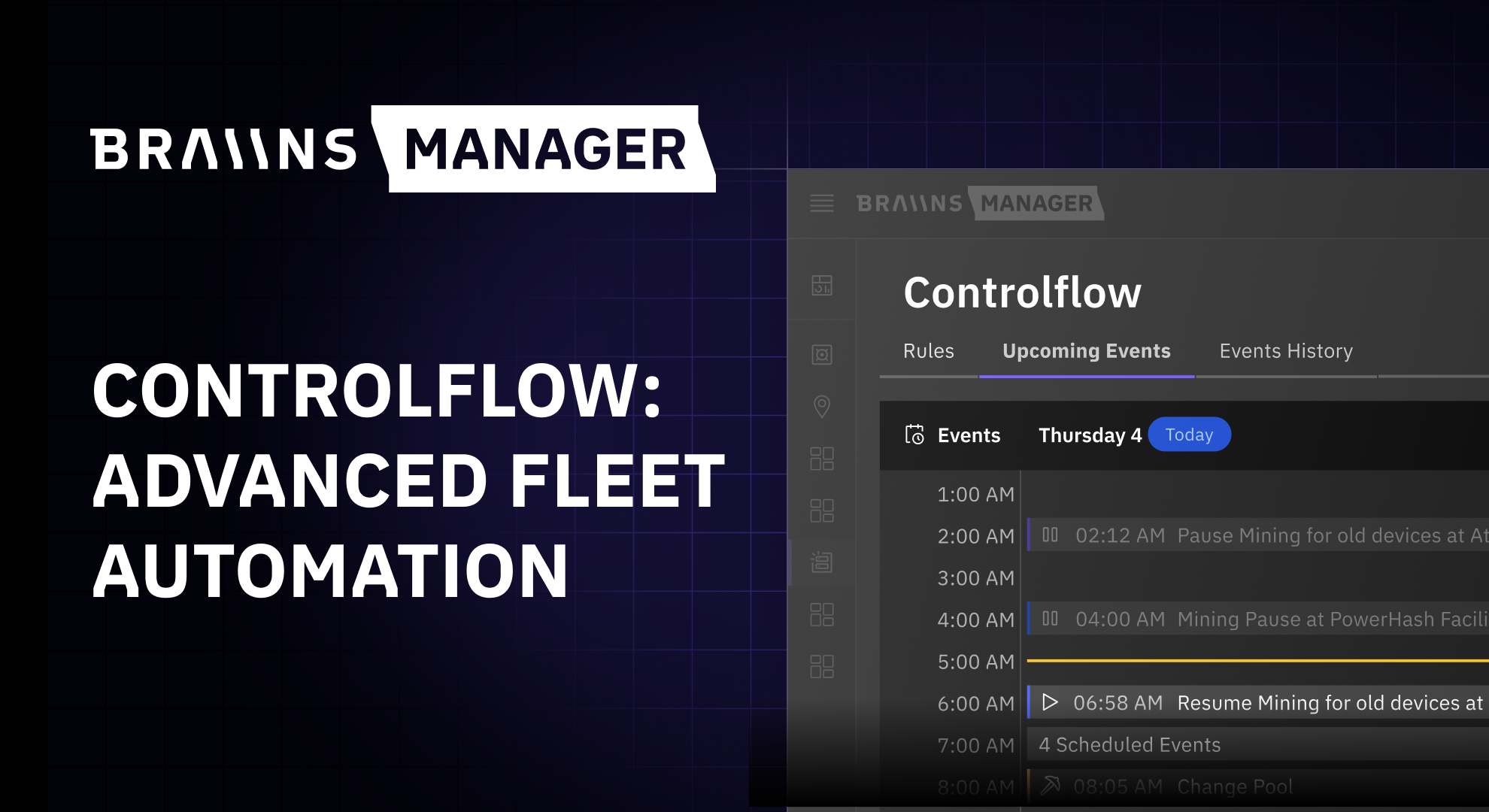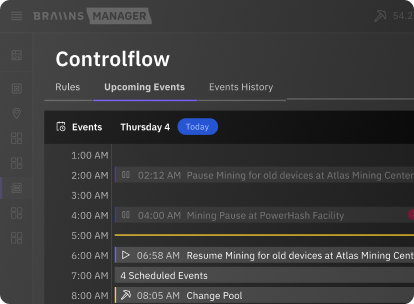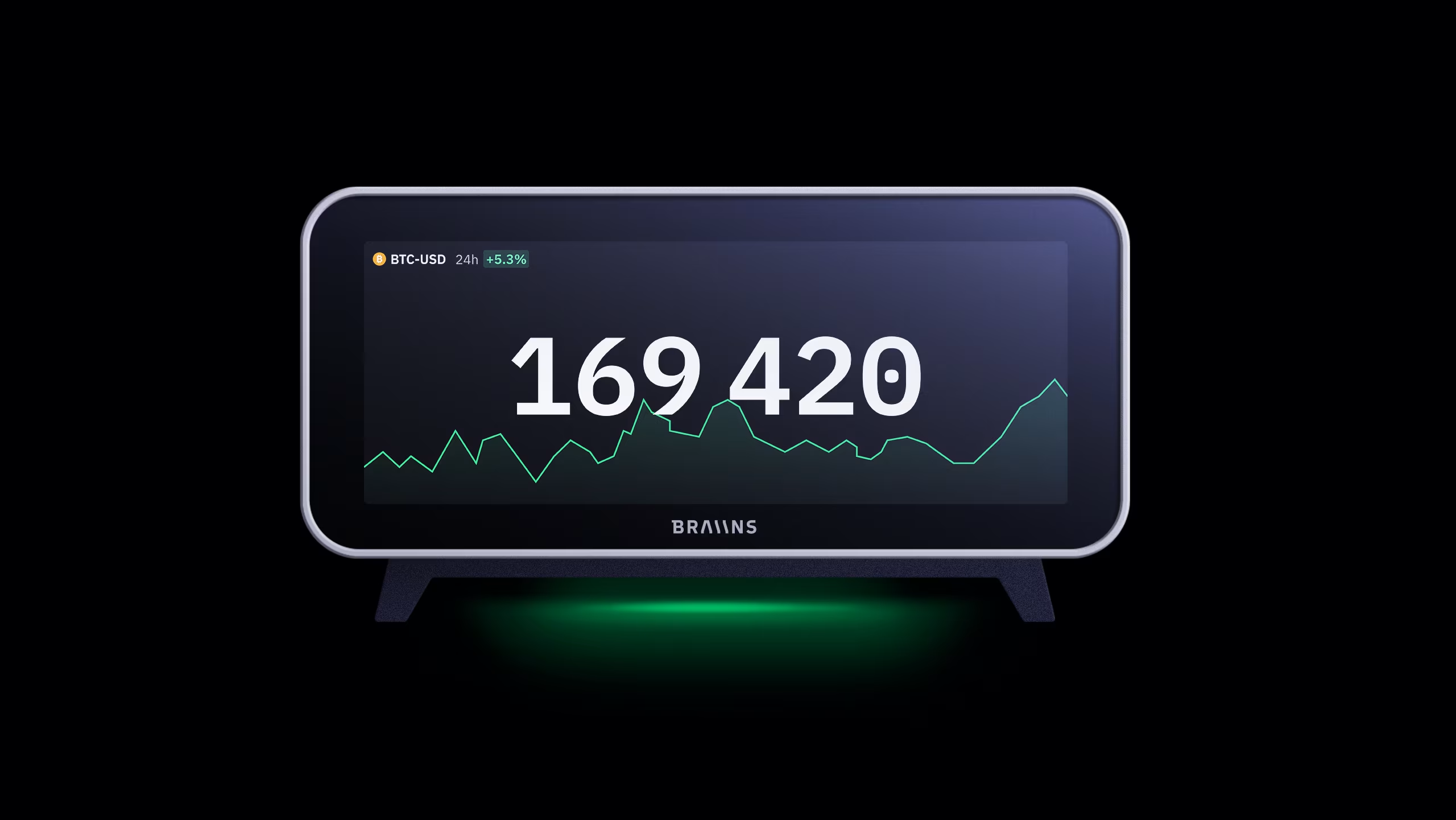Stay Cool, Mine On: Exploring Bitcoin Mining Cooling Solutions
Published
30.5.2024
Nico Smid, the Founder of Digital Mining Solutions and author of “The Bitcoin Mining Block Post”, sheds light on a critical aspect of every bitcoin mining venture: cooling systems. His company offers marketing services, supplies sites and rackspace, and provides educational products. In this article, Nico delves into the importance of optimizing cooling systems for both home miners and operators of multi-megawatt facilities, emphasizing its significance in achieving success in the mining industry.

Table of Contents
Bitcoin mining generates a significant amount of heat due to the intensive computational processes involved. Efficient cooling systems are essential to maintain optimal operating conditions for mining hardware.
Failure to properly cool your mining equipment can lead to overheating. This can result in reduced workload, which consequently decreases hashrate, or even causes a shutdown of the ASIC. Overheating also leads to increased electricity consumption, negatively impacting efficiency. In the worst-case scenario, inadequately cooled hardware can cause frequent breakdowns and even reduce the lifespan of an ASIC.
The three primary cooling methods used in bitcoin mining are air, immersion, and hydro-cooling. But how do these systems work? What infrastructure do they require? And what are the benefits and challenges associated with each? Let's delve deeper into the world of bitcoin mining cooling systems.
Air Cooling
Air cooling is the most common and straightforward method employed in bitcoin mining operations. It utilizes fans and ventilation systems to disperse the heat generated by the mining hardware. Mining rigs are positioned in well-ventilated areas, with fans circulating air over the components to carry away heat. The heated air is then expelled outside the facility.
To enhance air cooling efficiency, it's advisable to utilize intake louvers to prevent the ingress of rain and sand. Many operations also incorporate air filters at intake points to prevent smaller particles such as insects, dust, and pollen from entering. In regions with colder or moderate climates, ambient air is leveraged to cool the mining equipment. Conversely, in warmer climates, refrigeration components such as evaporative cooling pads or water curtains can be integrated to improve the effectiveness of air cooling.
Negative vs Positive Pressure
When implementing air cooling, there are two approaches to generate the required airflow. Negative pressure systems function by expelling more air from the mining facility than is drawn in. This creates a slight vacuum effect within the space, prompting air to be drawn in through any available openings. While this method efficiently dissipates heat, it also attracts dust, necessitating regular cleaning and maintenance.
Conversely, positive pressure systems operate by injecting more air into the mining facility than is expelled. This creates a slight pressure differential that pushes air out through any openings. Positive pressure setups may offer better protection against dust and debris, but they might require more robust cooling solutions to achieve the same level of heat dissipation.
Horizontal vs. Vertical Airflow
There are many variations in layouts and designs, but generally, there are two types of airflow management setups: horizontal and vertical. These different layouts can be applied to both buildings and mining containers.
In a horizontal airflow setup, the racks or shelves are positioned parallel to the width wall. The larger space is situated behind the shelves to provide cool air, while the smaller space is at the output side of the miners, typically close to the exhaust fans of the building to expel hot air outside. This configuration is also referred to as a two-aisle cooling system, separating the input area (cool aisle) from the output area (hot aisle). The shelves are ideally arranged in a bottom-to-top setup. If the racks cannot be stacked up to the ceiling, the top must be enclosed to prevent hot air from spilling back into the cool area.
In a vertical airflow setup, the exhaust fans are integrated into the ceiling, directing the hot air outside through the roof. This configuration is often preferred as it allows for the deployment of more machines per square meter. Typically, the racks are positioned parallel along the longest wall or length of the building. The output of the machine fans is directed towards the inside, creating a hot aisle in the middle of the building.
In both horizontal and vertical airflow setups, you can implement the concept of an elevated floor to draw in cold air. This practice is common in traditional data centers. In bitcoin mining, it's primarily used in containerized solutions. The elevated floor provides the ability to stack more ASIC miners, maximizing space efficiency.

Immersion Cooling
Immersion cooling entails submerging mining hardware directly into a thermally conductive liquid, usually a dielectric fluid or mineral oil. The mining rigs are completely immersed in the cooling liquid, which efficiently absorbs heat from the components. The heated liquid is subsequently circulated to a heat exchanger, where the heat is dissipated. Compared to air, the non-conductive fluid serves as a significantly more effective cooling medium. As a result, miners can operate at higher speeds without overheating, thereby increasing power and ultimately resulting in a higher hashrate output.
Immersion cooling is not a novel concept. As early as 2006, the technology was employed to enhance the power of PC gaming. A few years later, Green Revolution Cooling introduced the concept of open bath immersion for the high-performance computing industry. In 2010, Midas Green Technologies established the first-ever worldwide immersion cooling commercial data center.
Single-phase vs two-phase immersion cooling
In single-phase immersion cooling, the heated fluid is circulated to a heat exchanger, where the heat is dissipated into the environment or utilized for other purposes, such as heating buildings or greenhouses.

Two-phase immersion cooling harnesses the phase change of a coolant from liquid to vapor to enhance heat dissipation. Similar to single-phase immersion cooling, mining hardware is submerged in a dielectric fluid. However, in this method, the fluid is engineered to have a lower boiling point. As the hardware generates heat, the surrounding fluid absorbs it and reaches its boiling point, causing it to vaporize. The vapor then rises away from the components, carrying the heat with it. Subsequently, the vapor is condensed back into liquid form using a condenser, releasing the heat, and allowing the fluid to return to its original liquid state to continue the cooling cycle.
Hydro Cooling
Hydro cooling, also known as water cooling, employs water as a cooling medium to extract heat from mining hardware. Water is circulated through a closed-loop system that directly contacts the heat-producing components of the mining rigs. The heated water is subsequently pumped to a heat exchanger, where the heat is transferred to another water loop or dissipated into the environment.
In hydro-cooled systems, water flows through a network of pipes or channels that directly interact with the mining hardware. As the water passes through the cooling system, it absorbs the generated heat. The heated water is then circulated away from the mining hardware and either cooled via a heat exchanger or discharged into a cooling reservoir, such as a nearby river or lake. Once the water has released its heat and cooled down, it is recirculated back to the mining hardware to perpetuate the cooling cycle.
Direct vs Indirect Water Cooling
In direct water cooling systems, water is circulated directly over the surface of the mining hardware, typically through water blocks or heat sinks attached to the components.
On the other hand, indirect water cooling systems use a separate closed-loop system to cool a coolant, such as glycol or a specialized refrigerant. This coolant is then employed to indirectly cool the mining hardware via a heat exchanger.
Three Pros & Cons per Cooling System:
Air Cooling
Pros:
+ Cost-Effective: Air cooling systems are generally less expensive to set up compared to other cooling methods.
+ Easy Maintenance: Air-cooled facilities are relatively simple to maintain and require less expertise for upkeep.
+ Widely Available: Components for air cooling systems are readily available and easy to source.
Cons:
- Limited Efficiency: Air cooling may struggle to efficiently dissipate heat, especially in warmer climates or densely packed mining setups.
- Limited Scalability: Large-scale mining operations may find air cooling insufficient for managing heat generated by numerous mining rigs.
- Noise: Air-cooled systems often produce more noise due to fans running continuously.
Immersion Cooling
Pros:
+ Efficient Heat Dissipation: Immersion cooling provides highly efficient heat dissipation by directly submerging mining hardware in a non-conductive cooling liquid.
+ High-Density Setups: Immersion cooling allows equipment to run at a higher power rate thereby increasing the hashrate output per machine.
+ Reduced Dust and Corrosion: Since components are submerged, there's less risk of dust accumulation and corrosion, potentially extending the lifespan of mining hardware.
Cons:
- Initial Investment: Immersion cooling systems can be expensive to set up initially, involving specialized equipment and fluids.
- Complex Maintenance: While immersion cooling reduces the risk of hardware damage due to dust or corrosion, maintenance of the cooling liquid and equipment can be complex and requires specialized knowledge.
- Limited Compatibility: Not all mining hardware is immersion-ready. Many miner models require preparation before being submerged, such as removing fans and stickers.
Hydro Cooling
Pros:
+ Temperature Control: Water cooling systems offer good temperature control, allowing for more stable operating temperatures which improves the reliability and lifespan of the ASICs.
+ Scalability: Hydro cooling systems can be scaled up to accommodate large mining operations, offering flexibility for expansion.
+ Lower Energy Costs: Utilizing water for cooling can potentially lower energy costs compared to traditional air cooling methods.
Cons:
- Infrastructure: Hydro cooling systems require access to a reliable source of good quality water and appropriate infrastructure for water circulation and heat dissipation.
- Maintenance Challenges: Regular maintenance is necessary to prevent issues such as mineral buildup or leaks.
- Limited Systems Available: Hydro cooling is relatively new in bitcoin mining. Although the market is expanding, the number of hydro cooling system manufacturers remains limited.
Bitcoin ASIC miners generate a significant amount of heat while they operate, so effective cooling systems are crucial to maintain optimal performance and prevent overheating. Each cooling method has its advantages and limitations, and the choice depends on factors such as budget, facility infrastructure, and environmental considerations.

THANK YOU NICO

We are thrilled to have him contribute to Braiins Blog and look forward to more pieces in the future.
Follow Nico on X @Smidnico, and find more info on his website.
Become a PUBLISHED AUTHOR with Braiins
We are looking for the best and brightest paid external contributors for the blog. Send us a direct message us on X with your ideas and become a published author—our top content might make it in our next book.

Categories
Be the first to know!
Read Privacy Policy.
Most Recent Articles
.png)
The Best Bitcoin Conferences & Events of 2026
29.12.2025

Introducing Controlflow: Advanced Automation in Braiins Manager
9.12.2025



